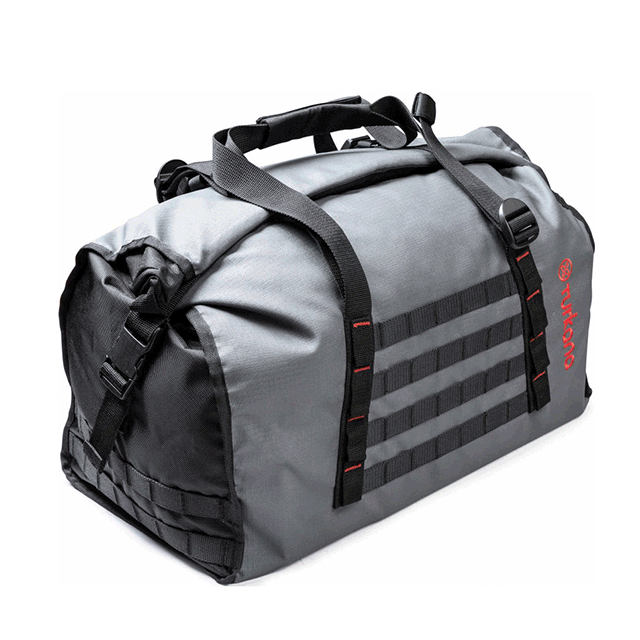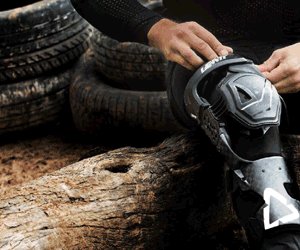“A challenge for those who go. A dream for those who stay behind.” – Thierry Sabine

The idea for the classic Dakar Paris Rally came about when founder Thierry Sabine became lost racing his motorbike during the 1977 Abidjan-Nice Rally in the Libyan desert. Sabine had lost his compass and was stranded having ventured into the expanse of the desert searching for rescue. The race organizer, Jean-Michel Sine, having set out by helicopter to search for the lost racer managed to locate him on the 14th of January. After being saved, Sabine returned to France still enthralled with the landscape of the North African desert. It was then that he decided to find a way to share the unique experience of the environment and its people with fellow riders and racers. So the idea for an authentic African Rally was born. Thierry plotted the route to start in Europe while winding its way down to the West African port city of Dakar in Senegal. The drive behind this dream was the true spirit of adventure that Thierry himself had experienced while in Africa. It was a vehicle for friendship between those who endured hardship, challenging themselves against each other and the elements. And most importantly, it would be open to anyone willing to submit themselves to the Spirit of Dakar.

The first start saw a total of one hundred and eighty-two vehicles lining up in Paris for the inaugural send-off at the Place du Trocadéro on the 26th of December 1978. Out of those only seventy-four survived the arduous 6200 mi / 10 000 km adventure to the Senegalese capital of Dakar. Frenchman Cyril Neveu took the honors and finished first on his Yamaha XT500 only to return to victory again the following year. In 1981 though it was the turn of Hubert Auriol to receive the checkered flag as he completed the then already famous desert race on a BMW R80 GS. This also is the year that Honda debut at the rally. From there on started a true Rally battle of German ingenuity and Japanese design with Bavarian Motor Works and Honda dueling for top honors till the late eighties when the title went to Italian Edi Orioli on his Cagiva Elefant 900. This was however only after Cyril Neveu managed to outride the Boxer engine powered competition with the now legendary Honda NXR 750. Leading two wins back to back in 1986 and 1987 on the first water-cooled two-wheeled machine to have taken the title at the Paris Dakar.

With this continued success the Rally quickly became a proving ground for manufacturers looking to produce the most reliable and capable motorcycles. Factory sponsored teams and riders started dominating the competition. With their bigger budgets, wider support network and the best equipment specifically developed for the Dakar the formula started winning customers. Especially for Honda. Thus it was for the 1989 edition that Jean Louis Guillot , the director of Honda France at the time, launched a ‘special’ operation termed “50 Africa Twin to Dakar.” The plan was simple, take fifty Africa Twin XRV 650 RD03’s and prep them especially for the harsh terrain of the Dakar. Then find them capable riders. This proved tougher than anticipated with an initial one hundred and fifty candidates having to be whittled down to the required number. The lucky souls who were selected were given specially prepared 650’s to race in the ‘Marathon’ category that allowed participants to use a modified factory-built motorcycle.

Modifications to the base model RD03 included a larger fuel tank carrying 10.8 gal / 41 l of fuel. The main fuel tank also featured four threaded pins for mounting a special tank bag that would keep the riders required racing papers close at hand. A rear aluminum tank was specifically designed to evenly distribute the added 4.6 gal / 17.4 l of fuel carried in the rear. Both the tanks featured bulkheads of soft sponge that restricted the movement of the fuel when full and helped with stability. Special covers protected them; plastic strips for the front tank and specifically designed fiberglass rear side-panels. Up at the front instrumentation included a rally trip, mechanical road-book, and compass. The larger than stock front fairing featured built-in airflow diverters along with a dedicated reinforced bar connecting the front side of the fairings. Each of the two oversized raidiators also saw a dedicated fan installed. The back of the bike got a rear rim width change down to 2.50″ instead of the standard 2.75”. The rear shock was also reinforced along with the front suspension being lifted by 10 mm. Chain guards were not used on the Marathon bikes however the swing-arm was strengthened for the rough terrain.

Wider foot pegs and a larger base side stand was also fitted. Additional storage for tools and fresh water was mounted on to the skid plate along with additional tabs welded to the sides of the plate to protect the gear and brake lever from strikes. A rather nice edition for working in remote locations was the removable support that came fitted just above the bash plate tool box. It worked in conjunction with two holes in the bottom of the bash-plate allowing the raising of either the front or rear wheel while making repairs. The rest of the changes were more limited to the bodywork with a well-padded seat, a special pocket for a location beacon, shortened front fender, reduced plate holder and the right fork guard being cut to expose the spindle retaining clamp. This sped up removing the front wheel when required.

For the 12th edition of the Dakar, fifty new motorcycles were set up slightly differently from the previous year’s edition. The new batch came with a frame number that began with 6, from 600001 to 600050, as opposed the past year’s numbers having started with 5. Twenty of the Marathons were delivered in France, at least three in Spain, while around fifteen were sent to Italy, in mid-November 1989 not making it in time to join the rally. One was booked at the last minute by rider Ermanno Bonacini. However, after just having completed only a few stages he was forced to retire due to a severe fall. His motorcycle was unfortunately abandoned in Libya. Antonio “Toni” Boluda, finished 18th overall on his Africa Twin 650 to become the winner of the Marathon category. His victory unfortunately also closed the chapter on the Marathon’s two-year streak at the Dakar. The technology was changing and Japan was already working on what would later become one of the most influential ADV bikes that the world has seen to date.

For many, the Africa Twin is the true father of ADV motorcycling. Having been cemented as a symbol of the spirit of Adventure motorcycling through it’s established Rally pedigree. With the humble 57 Hp of the Marathon it has managed to capture the imagination of countless young riders.
A special thank you to the information collected through various enthusiast and motorcycling historians via the world wide web. With special mention to Nightwings.





I was one of those young riders who was captivated by the Africa Twins. So much, that I ran out and bought a brand new XL600V Transalp as the Twin wasn’t available in the USA. 30 years later, I still own and ride that very same bike and use it occasionally to referee bicycle races. A couple years ago, a motorcycle cop accused me of illegally importing it into the USA. When I started pulling out my papers, he backed down.
It’s a shame that the US never got the great adventure bikes of the 80’s and 90’s. I think the ADV scene would have been radically different then. But recent uptake is promising for the overall scene. Sounds like that cop was just jealous!